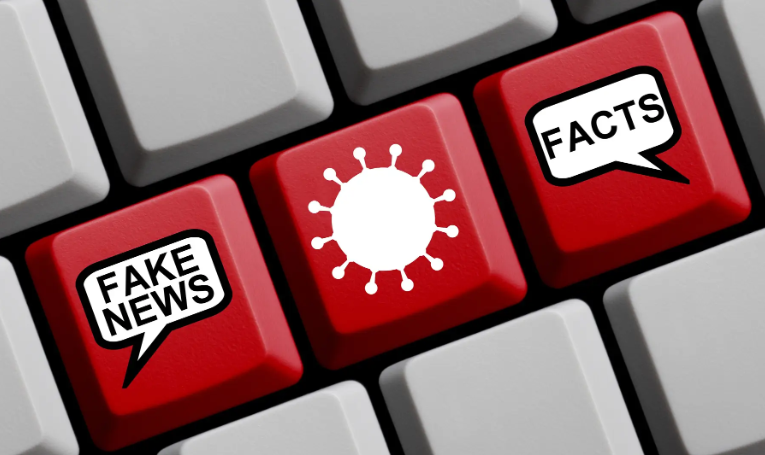Fighting Misinformation: Tackling Fake News Videos and Posts in the Digital Era
Social Issues Social Inequalities and exclusionPosted by NewAdmin on 2025-01-28 04:45:47 |
Share: Facebook | Twitter | Whatsapp | Linkedin Visits: 11

Picture yourself scrolling through social media and encountering a startling video—be it politicians making outrageous claims or a too-good-to-be-true scientific breakthrough. In today's digital world, information spreads at lightning speed, but not all of it is trustworthy. Fake news, often disguised as credible information, has become a pervasive challenge, misleading individuals and impacting societies globally. Understanding how misinformation proliferates, why it is harmful, and how we can prevent it is crucial to fostering a more informed digital community.
Fake news gains traction because it appeals to emotions and captivates attention with sensational content. Shocking headlines, heart-wrenching stories, or inflammatory videos are designed to provoke strong reactions, making people more likely to share without verifying accuracy. Social media algorithms amplify this issue by prioritizing such content for engagement, creating a cycle where false information spreads faster and gains unmerited credibility.
The rise of fake news is fueled by the digital age's accessibility. With countless social media platforms and websites, distinguishing fact from fiction becomes challenging amidst overwhelming information. Many fall victim to confirmation bias, believing news that aligns with their existing views while dismissing contradictory facts. Emotional triggers like fear and anger also play a significant role, pushing users to accept and share content without scrutiny.
The societal consequences of fake news are profound. It erodes trust in reputable news sources, damages public discourse, and can even incite real-world harm. Misinformation influences critical decisions, from healthcare choices to voting behavior, undermining democracy and exacerbating societal divisions. Economic fallout is also significant, as false rumors can tarnish reputations, disrupt markets, and cause financial losses.
Combatting fake news requires a multi-pronged approach. Media literacy education is vital, equipping people to critically assess sources and identify biases. Fact-checking organizations and tools can verify information and flag inaccuracies. Social media platforms must ensure algorithmic transparency and promote credible sources to counter misinformation. Governments and regulatory bodies can introduce accountability measures, balancing regulation with free speech protection.
Community engagement and technological solutions like AI can also play a role, fostering dialogue and detecting false content responsibly. Ultimately, individuals must take responsibility for the information they consume and share, prioritizing critical thinking and respectful discourse. By working together, we can counter the spread of fake news and build a digital environment that values truth and informed decision-making.
Search
Categories
- Sports
- Business
- History
- Politics
- International
- Science & Technology
- Social Issues
- Disaster Management
- Current Affairs
- Education
- Startup Business
- Startup News
- Awards
- Community Services
- Fundraising Events
- Volunteer Services
- Health Initiatives
- Innovations and Initiatives
- In News
- dummybanners
- Awards
- Partners
- Products
- Press Releases
- News
- Fast Check
- South
- సినిమా
- Gallery
- Sunday Chronicle
- Hyderabad Chronicle
- లైఫ్ స్టైల్
- National
- క్రైం
- ట్రెండింగ్
- జాబ్స్
- అంతర్జాతీయo
- బిజినెస్
- రాజకీయం
- బిజినెస్
- సంపాదకీయం
- నవ్య
- చిత్ర జ్యోతి
- క్రీడలు
- జాతీయం
- తెలంగాణ
- తాజా వార్తలు
- మన పార్టీ
- మన నాయకత్వం
- మన విజయాలు
- డౌన్లోడ్స్
- మీడియా వనరులు
- కార్యకర్తలు
- North East Skill Center News
- Government Schemes
- Entrepreneurship Support
- Employment Opportunities
- Skill Training Programs
- Departments
- Investments
- Initiatives
- Resources
- Telangana IT Parks
- Events & Jobs
- Press Releases
- News
- Airport News
- Newtons Laws of Motion
- Karbonn in Business
- Investments in Karbonn
- Company quarterly sales
- Markets
- Auto News
- Industry
- Money
- Advertisements
- Stock target
- Company Updates
- Stock Market
- Company Sales
- Staffing and HR
- Constituency Assembly
- General News
- Srikalahasti Temple
- Bojjala Sudhir Reddy
- Technology & Innovation
- Sports
- Business
- Products
- Industries
- Services & Trainings
- Tools & Resources
- Technology Integration
- Drug Seizures & Arrests
- Telangana Narcotics
- Law & Enforcement
- Rehabilitation
- Nationwide Drug Policing
- Nigeria Seizures
- Global Operations
- Drug Awareness
- Drug Enforcement Tech
- NCB Drug Seizures
- Judicial Crackdown
- India's Surveillance Tools
- Cross-Border Links
- Women Safety
- Cyber Crimes
- Drug Abuse
- Traffic & Road Safety
- Community Connect
- Public Safety Alerts
- Citizen Assistance
- Nellore City News
- Politics & Administration
- Events & Festivals
- Agriculture & Rural
- Business & Economy
- Health & Wellness
Recent News
- Putin Playbook: The Art of Declaring Stability
- Capital Gains Subject to Same Tax Rates Even with Section 87A Rebate
- Star Indian Fast Bowler Ruled Out Of Duleep Trophy Due To A Shoulder Injury
- The Ongoing Battle Against Seles Disease
- TPCC chief announces plan for party committee formation, initiates 'vote chori' campaign
- Devendra Fadnavis on Mental Health, Patriotism, and Responsible Freedom
- CM Fadnavis Advocates For 'Balance' In Deciding Stray Dog, Kabootarkhana Issues
- BMC Polls Likely In October, November Or December, EC Will Take Final Call: CM Fadnavis